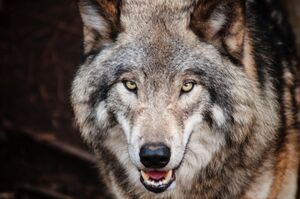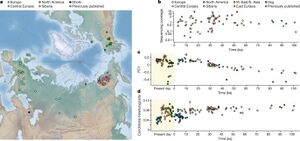Evolution of Wolves
Introduction
Wolves (Canis lupus) are iconic apex predators with a fascinating evolutionary history that spans millions of years. Modern wolves belong to the Canidae family, a diverse group of carnivorous mammals that includes domestic dogs (Canis lupus familiaris), coyotes (Canis latrans), and jackals (Canis aureus). These remarkable animals are celebrated for their adaptability, intelligence, and social behavior, which have enabled them to thrive in a variety of habitats across the globe. The evolutionary journey of wolves provides valuable insights into their survival strategies, ecological roles, and complex relationships with humans. Their lineage uncovers a story of resilience and transformation, from ancient ancestors to the apex predators we know today.br>

Genetics
The lineage of wolves traces back to the Miacids, small carnivorous mammals from the late Paleocene and Eocene epochs (approximately 62–33 million years ago). Miacids are considered the ancestors of all modern carnivores, including canids. By the late Miocene (about 10 million years ago), the family Canidae had split into three subfamilies: Hesperocyoninae, Borophaginae, and Caninae, with Caninae being the direct ancestors of modern wolves.
The genus Canis emerged around 2–3 million years ago, marking a significant milestone in wolf evolution. Early species such as Canis lepophagus and Canis edwardii exhibited transitional features between earlier canids and the robust forms of modern wolves. One notable relative, Canis dirus (the dire wolf), coexisted with Canis lupus during the Pleistocene epoch. Dire wolves were specialized predators of large Ice Age megafauna, a diet that ultimately contributed to their extinction as their prey disappeared. Fossil evidence reveals that the evolutionary trajectory of wolves was deeply influenced by their ability to adapt to changing prey and environments, ensuring their survival through multiple climatic upheavals.
Modern wolves belong to the genus Canis, which flourished during the Pleistocene. As Ice Age climates fluctuated, wolves adapted to a variety of habitats, from frigid tundras to temperate forests. Their ability to exploit diverse environments and prey allowed them to thrive across Europe, Asia, and North America.
Wolves' adaptations included long legs for endurance running, powerful jaws for crushing bones, and sharp teeth for slicing flesh. Social behavior, particularly pack hunting, emerged as a key evolutionary trait. This cooperative strategy allowed wolves to take down prey much larger than themselves, such as elk, bison, and moose, ensuring their survival even in harsh conditions. Fossil records indicate that wolves were highly successful during the Ice Age, competing with other apex predators and carving out a significant ecological niche. The genus Canis diversified during this time, giving rise to species that displayed a remarkable ability to adapt to various environmental challenges, setting the stage for the modern wolf's widespread distribution.
By analyzing 72 ancient wolf genomes from across Europe, Siberia, and North America, spanning the past 100,000 years, the researchers reconstructed the population history of wolves during the Late Pleistocene. Their findings reveal that ancient wolves exhibited high genetic connectivity across vast geographic ranges, allowing gene flow and resilience during periods of climatic and ecological upheaval. [2] The study identified Siberia as a critical region for wolf evolution, contributing substantial genetic diversity to other global wolf populations. Through admixture events, Siberian wolves influenced European wolf populations, particularly after the Last Glacial Maximum (LGM). This connectivity contrasts with the isolation observed in many other large carnivores during the same period, underscoring wolves' adaptability and mobility.

Section 2 Microbiome
Include some current research, with a second image.
Here we cite Murphy's microbiome research again.[3]
Conclusion
You may have a short concluding section.
Overall, cite at least 5 references under References section.
References
Edited by Amadou Diop, student of Joan Slonczewski for BIOL 116, 2024, Kenyon College.
